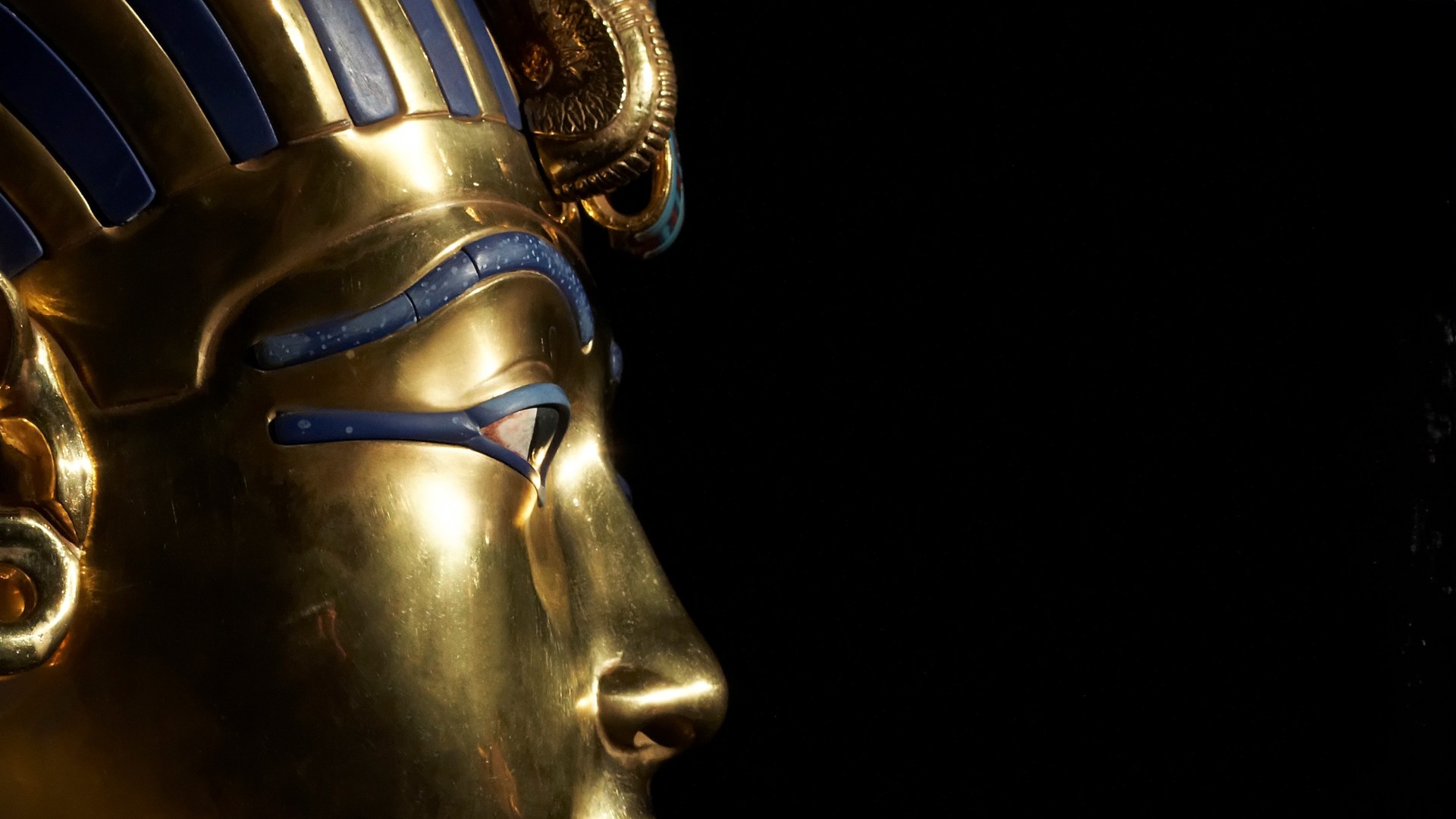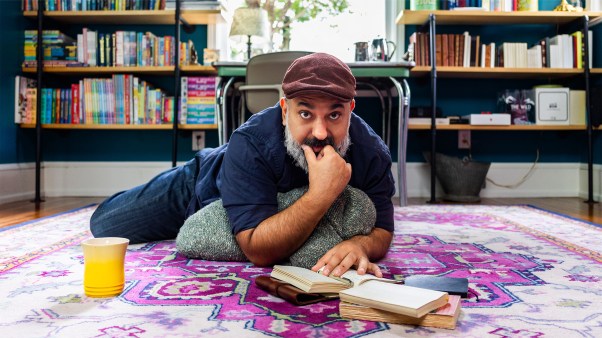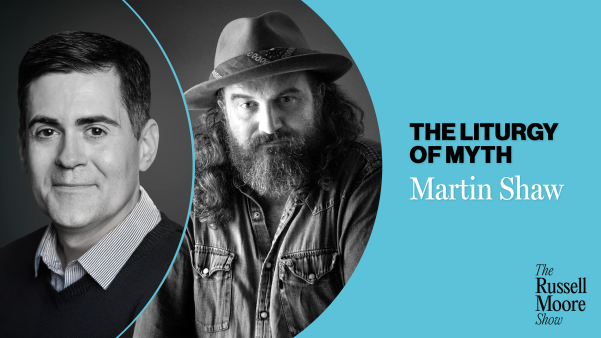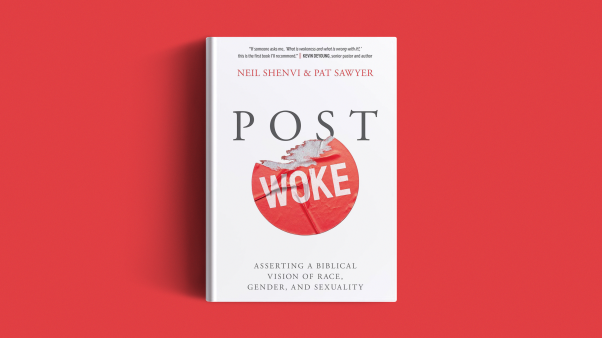We all know the Bible was not written on a blank slate. It records for us the life and times of ancient people who were embedded in a unique historical and cultural context, which was influenced in large part by its geography.
Outside the Promised Land, one of the places of greatest importance for the Israelites was Egypt. Not only did God’s people live there for some 400 years but Abraham and the prophet Jeremiah both traveled there. Even Jesus spent his formative years in Egypt, taken there by his parents when they fled from Herod.
Over the past four years, while writing a commentary on the Book of Exodus, I’ve read a lot about Egypt and realized just how much the ancient Egyptians can teach us about how to read and understand the Bible in its proper context. This was underscored by the study tour I took last month with Dr. James Hoffmeier, a renowned Egyptologist. Getting to visit pyramids, temples, museums, and tombs in person made so many familiar passages come to life.
The Book of Exodus is filled with references to the Israelites’ life in Egypt—including borrowed words from Egyptian and particular motifs that resonated in that context.
During their lengthy stay in Egypt, generations of Israelites would have been exposed to certain motifs over and over—and many of these pictorial representations informed the Bible’s own imagery. After all, the biblical authors chose conventional means to communicate eternal truths about Yahweh. These visual concepts would have made sense to their audience—and now, having seen some of them with my own eyes, they make more sense to me too.
Below are six examples which I found especially insightful.
The Garden Temple
I’ve read before that people of the ancient Near East styled their temples after gardens, but I was able to witness this phenomenon with my own eyes.
Many of the temples we visited featured pillars shaped like papyrus plants. The famous Hypostyle Hall of the great Temple of Amun-Re at Karnack had a whopping 134 papyrus-shaped pillars of an enormous size—seven people could barely reach their arms around a single pillar. On one end of the hall, the papyrus buds were closed, but on the other end, the plant’s petals were open wide in full bloom. Each pillar was decorated with brightly colored reliefs (carvings in the stone) with dyes made from plant powders.
Temple ceilings, where preserved, invariably featured paintings of a deep blue sky with yellow stars. And though the temples were made wholly of stone, they gave the impression of luxuriant gardens—with depictions of trees and plants like papyrus and lotus common throughout.
It’s no wonder Israel’s own temple had a deep blue ceiling held together by gold fastenings to twinkle in the light of the lampstand (Ex. 26:1–2, 6, 31–32). It’s no wonder that the lampstand inside the temple was styled as a tree with branches and buds—and that pomegranates dangled from the robe of Israel’s high priest (Ex. 25:31–40; 28:31–33). A garden temple recognizes God as Creator and acknowledges God’s role in the flourishing of the natural world.
The Wings of Protection
In Egypt’s temples, we saw winged creatures everywhere we looked—sometimes seraphim and sometimes other deities with wings outstretched, offering protection to the Pharaoh. The sacred barque (or boat) carrying the divine image was invariably flanked with winged protectors.
These images reminded me of the cherubim embroidered on the curtains of Israel’s tabernacle and temple (Ex. 26:31) and the gold cherubim with wings outstretched over the ark of the covenant in the Holy of Holies (Ex. 37:9, 1 Kings 6:27). I also have a clearer sense of why Boaz would have described Ruth as seeking protection under the wings of Yahweh (Ruth 2:12) and why the psalmist referred to people taking refuge under God’s wings (Ps. 17:8; 36:7; 91:4).
The Giving of the Spirit
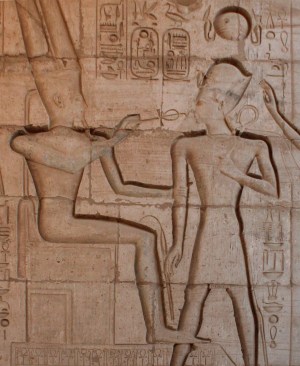 Courtesy of Carmen Imes
Courtesy of Carmen ImesPerhaps you’ve noticed that most ancient Egyptian statues are missing their noses. While this may be explained in part as the nose being the most vulnerable part of a statue if it tips over, it’s also true that the fastest way to decommission a statue—and indicate that a Pharaoh no longer has the right to rule—is to break its nose.
The Egyptians believed that souls entered and exited through the nose. A dead Pharaoh with no nose would be doubly dead—not just physically, but spiritually—with no hope of resuscitation. The Pharaohs went to great lengths to protect their bodies so that they would be intact and therefore viable in the afterlife. A mummy was housed in a coffin inside a coffin inside a coffin, like Russian nesting dolls.
In many of the tombs and funerary temples we visited, we saw scenes carved in stone in which a deity offered the ankh, or symbol of life, to the Pharaoh by holding it up to his (or her) nose. By receiving life from the deity after his death, the Pharaoh would be spiritually animated to carry out the will of the gods.
These “giving of life” scenes remind me of Genesis 2, where God breathed life into the first human being. Hoffmeier also pointed out that when David prayed in Psalm 51:11, “Take not your Holy Spirit from me” (ESV), he was probably not worried about losing his salvation but rather about losing divine legitimacy for his rule. Recall that God had taken his Spirit from Saul to remove him from kingship (1 Sam. 15:23; 16:14); David did not want the same to happen to him.
The Strong Arm of Pharaoh
For thousands of years, Egyptian artifacts depicted Pharaohs in their favorite so-called “smiting pose” to indicate their military might. You can see a good example of it on the famous Narmer Palette, from 3100 B.C. In it, Pharaoh stands with one hand stretched out behind his head, grasping a mace, and another stretched out in front, grasping the hair of his defeated enemy.
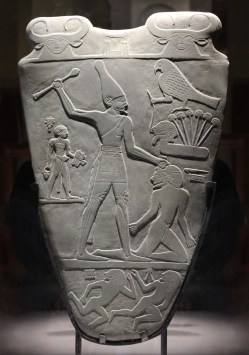 Courtesy of Carmen Imes
Courtesy of Carmen ImesWhat I didn’t realize is how ubiquitous this visual was. We saw it in every temple, sometimes dozens of times. In the temple of Rameses III, the first pylon (entryway wall) and every pillar in the first chamber shows the Pharaoh in this pose, each depicting a different defeated foe in his grasp. In essence, the hall functions as a visual resumé of Rameses’ military successes.
The depiction is not just pictorial but textual. On one of the outside walls is an inscription above the scene that reads “the one with a strong arm,” indicating one of Pharaoh’s preferred titles: “Strong-armed.”
Does this sound familiar? Throughout the Old Testament, Yahweh refers to himself as one with “a mighty hand and an outstretched arm”—usually used in reference to God’s actions during the Exodus. In fact, the phrase referring to God’s “outstretched arm” is reserved almost exclusively for Egyptian contexts (Ex. 6:6; Deut. 4:34; 5:15; 2 Kings 17:36; Jer. 32:21).
In other words, Yahweh posed a direct challenge to Pharaoh and Pharaoh’s worshipers—as if to say, “You think you have a strong arm? Just watch what I can do!”
Daily Life in Ancient Egypt
Aside from how such figurative imagery illuminates the biblical text, I learned much from the artwork about the daily life, work, and gender roles of men and women in ancient Egypt.
In the tombs of the nobles and workmen as well as in the museums that held the artifacts found in these tombs, I saw statues, paintings, and sculptures depicting bread making, beer making, brick making, sculpting and writing, planting and harvesting, tanning leather, scenes depicting childbirth, and more. I saw combs, makeup palettes, and jewelry, tools for spinning and dying wool and flax, and models of ancient looms. I saw carpenter’s tools and flint knives, hoes and grinding stones, a handsewn tent, beds, and chairs.
Ancient Egyptians believed that a person would need everything in the afterlife that they needed in this life. They expected to work in the fields of the god Osiris, so they stocked their tombs with a variety of practical implements such as plows and shovels, plus a bed, chair, and clothing. In contrast, the Hebrews at that time mostly concerned themselves with how their “name” or reputation would be remembered after they died and said almost nothing about life after death—that is, until the latest Old Testament periods.
Looking back, the Egyptians had the right impulse about the continuation of human vocation in the afterlife—similar in some respects to how we now conceive of the New Jerusalem—but it would be many hundreds of years before God revealed any particulars to the Jewish people.
These are insights we miss out on whenever we ignore the geographical context of the Old Testament. And yet, thanks to the dry and sandy climate in Egypt, we have the privilege of traveling more than 3,000 years back in time to catch well-preserved glimpses of a culture that profoundly shaped the Israelites—and all the people of God who came afterward.
Carmen Joy Imes is associate professor of Old Testament at Biola. She’s the author of several books, including Bearing God's Name: Why Sinai Still Matters, and she is currently writing a commentary on Exodus for Baker Academic.

